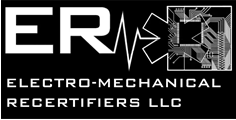Whenever an electrical appliance (an appliance refers to any piece of equipment for adapting a tool or machine, equipment to a special purpose) or any electrical powered device or tool. When a tool, machine or equipment is put into service, serviced and then supplied for use in the shop or field or an item is supplied for rental; a scenario a legal responsibility exists to ensure that the product is fit for purpose for which it is intended and is safe for operation. Equipment that is not maintained, repaired and tested can cause electrical shock and fire.
Every year 1,000´s of electrical accidents occur with portable equipment, however, with the diligent implementation of a safety policy involving inspection and testing it is possible to avoid many of these accidents. OSHA states that to be fully assured of meeting its electrical duty clause any employer using electrical apparatus, in particular portable electronic appliances and electrical equipment on construction sites, shop applications and job sites (because of the recognized hazards that can occur with such equipment) must establish safety programs which demand rigorous inspection and meaningful electrical testing of the equipment.
Legislation of specific relevance to electrical maintenance initial new product clearance testing and safety testing are requried. In the U.S., regulatory requirements and federal laws are found in the Code of Federal Regulations. In this Code (CFR21-1910, Subpart S), you find regulations for product safety approvals of electrical devices. The mandatory federal requirements specify that all electrical appliances and devices be “listed” by a Nationally Recognized Testing Laboratory (NRTL) for the purpose in which they are used.
A new product when initially listed is commonly identified by the testing laboratory’s listing mark (UL, ETL, MET, FM, Etc.) conspicuously attached to the product. The lasting mark indicates that the manufacture of the device has submitted a sample to the library for product safety test and evaluation in accordance with the relevant safety standard.
In the U.S. safety programs are self-administered and the Tool and Electrical Safety Programs allow for companies to design their own programs. The tools and equipment sections are supposed to cover ongoing maintenance (includes tagging and tracking), repair and electrical testing of these devices.
So the questions becomes “Do I need my used in service portable electrical appliances, devices, tools and equipment tested?
The answer is Yes- to comply with safety regulations all portable electrical appliances and devices should be routinely inspected and tested by a competent person. The regulations apply equally to small companies and the self-employed as to the larger organizations.
What electrical equipment needs to be tested?
The regulations cover all items of in-service electrical equipment, this includes all movable items connected to the mains supply by plugs, industrial plugs or hard wired via a fused connection unit. In addition to being responsible for the safety of their own portable appliances, companies are also responsible for the safety of electrical equipment brought on site to land based operations as well as aircraft, ships and oil rigs by employees and contractors.
How often does an item need testing?
The requirements are based on principles of risk assessment and reasonable practicability. The frequency of inspection and testing required will vary depending on the type of appliance, its location, and its use. The Institute of Electrical Engineers (IEE) publishes advice and guidelines. Certain devices require bi-annual and other monthly testing. Commonly used tools and equipment are typically recommended to be tested every 6 months. NETA guidelines spell out different testing procedures.
What do the tests entail?
The testing consists of two separate activities; a visual inspection to check for damage and poor electrical standards for items that can be easily identified and a series of instrument tests to check for less obvious electrical faults which can’t be seen. OSHA states that the tests must check the following
a) The integrity of the Insulation
b) The effectiveness and continuity of the grounding conductors
c) The operation of personal protective devices i.e. Ground Fault Circuit Interrupters (GFCI´s) and levels of any leakage.
What does your electrical safety and/or tool maintenance program address?
To meet the requirements of any established safety program it is essential that a record or system is maintained of the tests and checks on every piece of equipment. A tagging system which defines the state of the equipment at any time and displays:
a) Details of Inspection and results of tests carried out
b) If the equipment should be withdrawn from use
c) Date of Inspection and Test.
If you are not repairing, testing and tracking your tool repairs you may be in violation of not following your tool policy and larger yet be violation of your overall safety policy and program.
Electro-Mechanical Recertifiers, LLC. can help you comply with a CMS computer based, preventative maintenance program and electrical safety testing for your extensions cords, drying equipment (dehumidifiers and fans), and HEPA vacuums as well other equipment and hand tools used in your shop, in the field by your employees and rented to your clients

Recent Comments